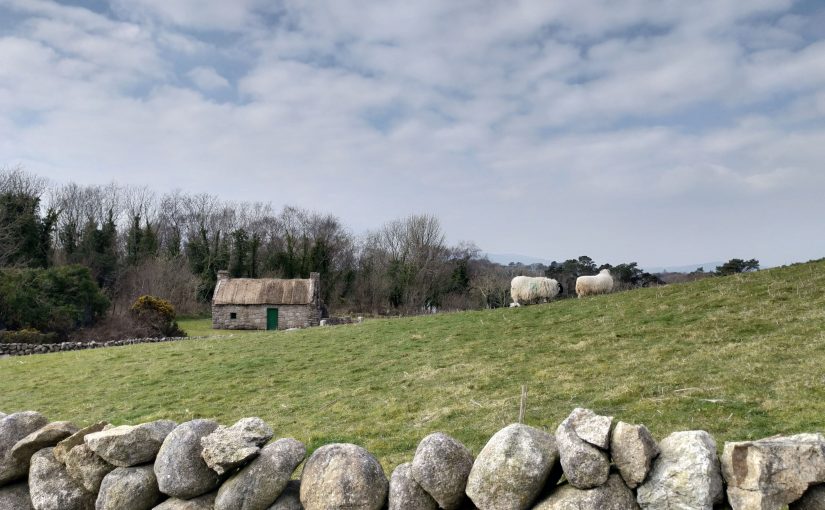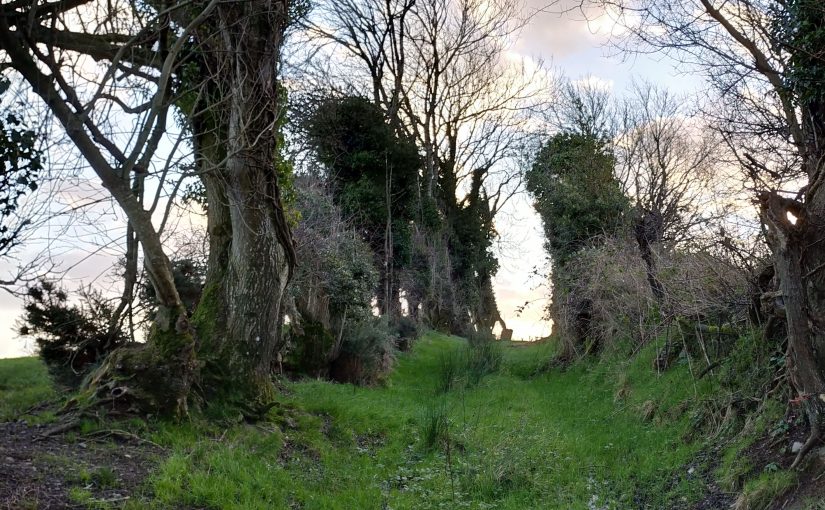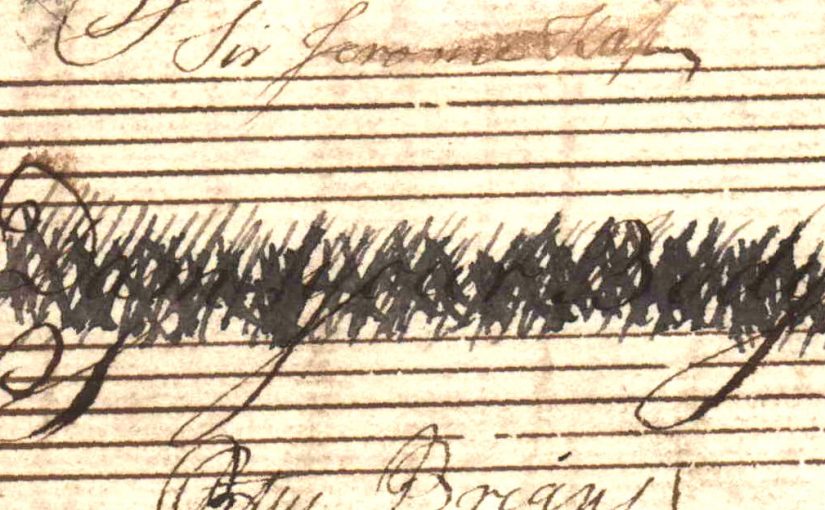The past 25 or so tunes I have written up here have mostly had some kind of attribution to the harper and singer, Charles Byrne. Checking my Tune List Spreadsheet, I think Rambling Boy is the last Byrne-attributed tune that I have not yet written up, and so this post marks the end of this Byrne series. I think Byrne is very interesting, but I don’t know how useful he is for my Harp Transcriptions project, since I think he may have been mainly singing for Bunting, not playing the harp so much.
Continue reading Rambling BoyTag: Charles Byrne
B’fhearr Liom Ná Éire
Probably in 1792, Edward Bunting made a very clear live transcription notation of B’fhearr Liom Ná Éire into one of his collecting pamphlets. He made this live transcription from a tradition-bearer onto Queen’s University Belfast, Special Collections, MS4.29 p.39/37/46/f18r, on the facing page opposite Diarmaid Ó Dúda.
Continue reading B’fhearr Liom Ná ÉireA rún, fan agam is fuirigh go ló, ⁊ Bruach na coille craobhaí
On page 194 of his “Damn your Body” bundle of live transcription pages, Edward Bunting wrote live sketches of two song airs, perhaps from the singing of harper and tradition-bearer Charles Byrne in the 1790s. Because I think these are transcribed from songs and not from harp performances, I am going to look at both quickly so we can move on.
Continue reading A rún, fan agam is fuirigh go ló, ⁊ Bruach na coille craobhaíMaidin bhog aoibhinn
During the 1790s, Edward Bunting made four different live transcriptions of the tune of Maidin bhog aoibhinn. They are in different sections of QUB SC MS4.29, and were transcribed from four different tradition-bearers. Bunting published a kind of composite or synthetic version of the tune in his Ancient Music of Ireland (1840). In this post we are going to look at the four different live transcriptions, and try to say something useful about each of them.
Continue reading Maidin bhog aoibhinnCáiteach róin
Some time in the 1790s, Edward Bunting made two different transcription notations of the tune of A cháiteach róin onto the same page in his “Damn your Body” collecting pamphlet. He later claims both were transcribed from the singer and harper Charles Byrne.
Continue reading Cáiteach róinGrá na mBan Óg
Edward Bunting made what looks like a live transcription of a tune which he gives two titles, Grá na mBan Óg or James Plunkett. The notation is in one of his 1790s transcription pamphlets, now bound up as Queen’s University Belfast, Special Collections, MS4.29 page 197/195/204/f97r.
Continue reading Grá na mBan ÓgNa Gamhna Geala
In one of his little 1790s collecting pamphlets, Edward Bunting made what looks like a live transcription from a traditional performance of the tune of Na Gamhha Geala. The page is now bound up as part of Queen’s University Belfast, Special Collections, MS4.29 page 198/196/205/f97v.
Continue reading Na Gamhna GealaDamn your Body
Queen’s University Belfast, Special Collections, MS4.29 page 185/183/192/f91r is a kind of title page for a 16 page pamphlet which is now bound up in the composite manuscript MS4.29. The pamphlet consists of 16 pages in MS4.29, from page 185/183/192/f91r through to page 200/198/207/f98v, and contains live transcription notations of traditional Irish music, which were written down by Edward Bunting on his collecting trips in the 1790s. This pamphlet seems to have been bound up with all his other loose collecting pamphlets in around 1802-1805, to form the volume which is now QUB SC MS4.29.
Continue reading Damn your BodyUair bheag roimh an lá
The final tune in this little group of three or four tunes we have looked at recently, is Uair bheag roimh an lá, a little hour before the day. We have Edward Bunting’s live transcription dots from the 1790s, and we have piano arrangements that he made based on this transcription. In this blog post I will line all these up and try to say something useful about the live transcription dots on Queen’s University Belfast, Special Collections, MS4.29 page 94/90/099/f44v.
Continue reading Uair bheag roimh an láClár bog déil
The third tune in this group of four we are looking at is on the same page as the Little Munster Mantle. It is titled “Castle Moon” above the notation, and “Cleaur bug deal / soft boards of Deal” below.
This notation looks to me like it was made by Edward Bunting as live transcription “dots” written live as a traditional informant played or sang to him in the 1790s.
The notation is in Queen’s University Belfast, Special Collections, MS4.29 page 93/89/098/f44r.
Continue reading Clár bog déil








